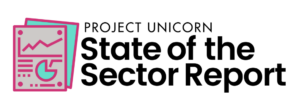6 Ways to Promote Data-Driven Instruction in K-12 Schools

By: Jason Lange
When you think about it, education is really all about data.
Think about what makes a great teacher. Fundamentally, it’s the ability to quickly analyze available knowledge — a student’s blank stare, for example — to decide if a student is “getting it” and respond accordingly.
When educators use data to drive their plans and decisions, they can grasp how to respond to problems, construct new ways to teach, and advance skill sets at an even faster rate.
The push for data-driven instruction has been widespread since the implementation of the No Child Left Behind Act, which was signed into law in 2002. Yet the number of individual classrooms regularly practicing DDI remains startlingly low.
It would be easy to blame teachers for the slow adoption rates, citing a supposed “fear of data,” but the true reasons are actually more complex. Only when we address the real issues holding education back and discuss ways to solve them will we be able to provide DDI to students countrywide.
What’s Holding Data Back?
First of all, I’d like to debunk the myth of teachers’ “fear of data.” The truth is that educators have been using data collection and analysis techniques in their classrooms to track students’ skills, comprehension, and progress for years. Many of these are simple methods, such as tallying missed assessment questions or charting students’ reading skills, but they still provide teachers with useful information to improve the educational experience.
Recent studies have shown that teachers in schools with data-focused programs find that data use improves instruction, revitalizes their eagerness to teach, and increases professional fulfillment. So what’s stopping its proliferation?
Here are a few factors that have slowed the implementation of DDI:
- Collecting good, reliable data takes discipline. Properly collecting data requires a level of discipline that most people aren’t inherently comfortable with. Consider how many people actuallywrite down their personal goals — like a New Year’s resolution or an exercise plan — and track their progress over time. The answer: not many. Simply put, we’re not wired to gather data without a great deal of intentional focus, and teachers have plenty on their plates as it is.
- Making sense of data can be a full-time job. Even if you manage to collect great data, interpreting it in an actionable manner is not only time consuming, but it also requires some pretty advanced analytical skills. It can be an enormous task for a single teacher. Many schools simply lack the tools, resources, time, and training to aptly utilize data that’s been collected for each classroom.
- Sometimes there’s too much data. Schools generally gather more data than they can use. An overabundance of data and conflicting results can make it difficult to prioritize information and create worthwhile curriculum changes.
How to Make It Work
Luckily, there are ways that school districts, administrators, and educators can work together to implement data-driven instruction programs in more classrooms while still making the experience engaging and beneficial to teachers and students.
Here are six methods schools can put into practice:
- Keep it simple. Use simple tools and techniques to collect data, such as clickers, response sticks, or exit tickets. They’ll provide a straightforward process for understanding learning outcomes.
- Think small. Start with one class, and scale your efforts with the progress. For example, if you want to improve your questioning strategies, track the times you require students in one class to justify their responses. Once you find instructional techniques that work, slowly apply them to all your classes.
- Analyze your efforts. Based on the data,reflect on whether the steps you’ve taken have had an impact. When you begin to see a difference in the students and their work, the extra effort will seem valuable.
- Engage students. Involve students in setting goals and tracking progress to invest them in the process. This might be as simple as improving an opening routine or as complex as meeting large assessment goals. Likewise, encourage students to reflect upon their progress to help them determine what worked, what didn’t, and what should be done differently next time.
- Make progress visible. Track progress daily using a graph or chart. This will help students see their progress and, ultimately, be empowered. The size of the goal doesn’t matter; students need to see what they’re working toward and what they’ve accomplished.
- Be transparent with class-wide results. Follow pre-assessments tests, and communicate the results to students. You don’t have to single them out. Simply relay the outcomes, and explain how instruction will be adjusted based on the new information. For example, you could say, “Based on the data from this quiz, we need to revisit phases of the cell cycle, so you’ll see questions on this topic in your warm-ups for the rest of the week.”
The delay in DDI isn’t due to educator anxiety. Rather, it’s a direct result of the complexities of data analysis and an inability to make results useful. But as more school districts, administrators, and educators recognize how integral data collection and analysis is to improving education, more teachers will find ways to implement this type of instruction in their classrooms.
 Jason Lange is the CEO and co-founder of BloomBoard, a company dedicated to bettering the K-12 education space by providing a marketplace for personalizing educator development. BloomBoard uses the data collected from free observational and evaluation tools to create individualized learning plans and recommendations for teacher growth.
Jason Lange is the CEO and co-founder of BloomBoard, a company dedicated to bettering the K-12 education space by providing a marketplace for personalizing educator development. BloomBoard uses the data collected from free observational and evaluation tools to create individualized learning plans and recommendations for teacher growth.




Bridget Smith, elementary teacher
I am really excited about BloomBoard! I was trying to use livebinders to organize and keep track of my artifacts. Now, I can actually use the data to drive my instruction and communicate with my principal. I teach students that are in need of much support. I feel like BloomBoard will help me and my administators to work as a team to create a utopia of learning for each student.